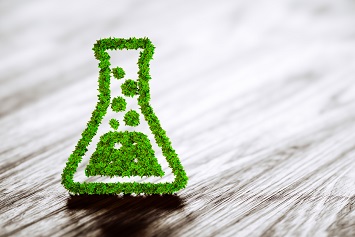Currently, global warming is one of the most significant threats to our survival on this planet, prompting scientists to try and find innovative solutions to this problem. One of the most significant contributors to global warming is the molecule carbon dioxide; it works by making our atmosphere like the glass walls of a greenhouse. Therefore, one angle of looking at the problem is to find novel ways to remove this gas from the environment. Well, a team of researchers led by Zhenxing Feng of the Oregon State University College of Engineering and colleagues at Southern University of Science and Technology in China and Stanford University did just that.
The paper, published in Nature Energy, describes a new type of electrocatalyst, a series of nickel phthalocyanine (NiPc) molecules supported on carbon nanotubes (CNT) as molecularly dispersed electrocatalysts (MDEs), which can selectively reduce carbon dioxide into the desired product; In this research, the desired product was carbon monoxide. This is a better method for the removal of carbon dioxide compared to the currently available ones.

Before this discovery, the methods used to reduce carbon dioxide were very difficult. The first issue was that they required very high temperatures or pressures, making it very energy consuming and expensive. In contrast, this method can take place at room temperatures using a liquid solution. The electricity required can also be obtained from green resources, thus making the overall process a step towards becoming completely green.
Another limiting factor in the methods for the reduction of carbon dioxide is the availability of multiple reaction pathways that lead to different products. This electrocatalyst was specifically engineered to counter that problem, and the result is the reduction of carbon dioxide into carbon monoxide.
“To understand the reaction mechanism of our catalyst, my group at OSU used X-ray absorption spectroscopy to monitor the catalyst’s change during the reaction processes, confirming the role of the catalyst in the reaction,” Feng said. “This collaborative work demonstrates a high-performance catalyst for green processes of electrochemical CO2 reduction reactions. It also sheds light on the reaction mechanism of our catalyst, which can guide the future development of energy conversion devices as we work toward a negative-carbon economy.”
You can read more about this discovery in the OSU Newsroom.
Journal reference:
Zhang, X., Wang, Y., Gu, M. et al. Molecular engineering of dispersed nickel phthalocyanines on carbon nanotubes for selective CO2 reduction. Nat Energy (2020). https://doi.org/10.1038/s41560-020-0667-9

